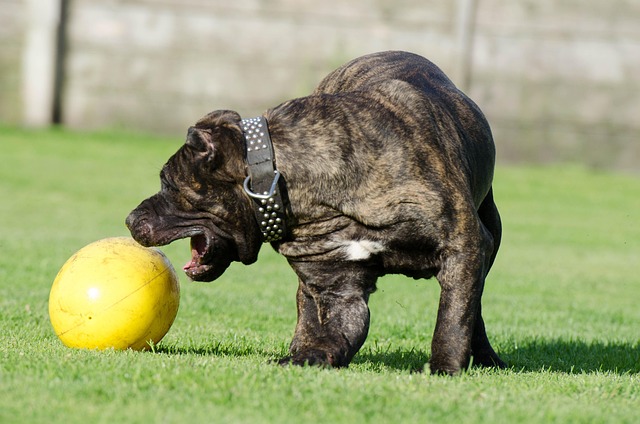
How to Encourage Independent Play in Dogs and Cats
In a world where pet parents juggle busy workdays, family obligations, and social lives, it’s not always possible to provide constant entertainment for furry companions. While interactive play is essential, independent play—where dogs and cats engage themselves without human input—is equally important. Encouraging independent play fosters mental stimulation, reduces anxiety, and helps build confidence in your pets. But how do you nurture this skill, especially in animals that prefer your constant attention?
This article will explore the concept of independent play, the psychological and behavioral benefits it offers, and proven strategies to help your dogs and cats become self-sufficient players—happier, healthier, and more fulfilled as a result.
Understanding Independent Play
Independent play refers to a pet’s ability to engage in enjoyable and enriching activities without direct interaction from their human. It doesn’t mean ignoring your pets—it means empowering them to entertain themselves safely and constructively.
For both dogs and cats, independent play involves:
- Engaging with toys on their own
- Exploring their environment
- Initiating solo activity
- Using problem-solving skills
The goal is not to reduce bonding time but to enhance their autonomy, so they remain stimulated even when you’re away or busy.
Why Is Independent Play Important?
1. Builds Confidence and Reduces Anxiety
When pets are constantly dependent on human interaction, they can develop separation anxiety or attention-seeking behaviors. Independent play:
- Teaches them how to be alone without stress
- Builds resilience and self-soothing skills
- Encourages curiosity and exploration
2. Promotes Mental Stimulation
Bored pets are more likely to develop behavioral issues like chewing, scratching, or excessive barking/meowing. Independent play provides mental challenges and problem-solving opportunities that:
- Keep their brains sharp
- Ward off destructive behavior
- Support cognitive development in young animals and aging pets
3. Supports Physical Exercise
Even self-directed activities like chasing a ball or climbing a cat tree offer valuable physical exercise—essential for maintaining a healthy weight and preventing conditions like arthritis or diabetes.
4. Encourages Natural Instincts
Independent play lets pets practice natural behaviors such as:
- Stalking and pouncing (cats)
- Foraging and sniffing (dogs)
- Chewing and gnawing
- Digging, scratching, or hiding
By supporting these instincts, pets lead more enriched, balanced lives.
Independent Play for Dogs
Dogs are naturally social creatures, bred for companionship and pack behavior. This makes encouraging solo play slightly more challenging—but very possible with patience and consistency.
1. Start With the Right Toys
Dogs can’t play alone if they don’t have engaging tools at their disposal. Offer a variety of interactive toys designed for independent engagement.
Recommended Toy Types:
- Treat-dispensing toys: KONGs, puzzle feeders, snuffle mats
- Chew toys: Benebone, Nylabone, or natural chews (bully sticks)
- Squeaky and crinkle toys: Stimulate auditory senses
- Rope toys or soft toys: For tossing and tugging solo
????️ Tip: Rotate toys every few days to keep them novel and exciting.
2. Teach “Go Play” as a Cue
Training your dog to understand that it’s okay—and even rewarding—to play on their own is key.
Steps:
- Say “Go play” and present an interactive toy.
- When your dog engages with it, praise and give a small treat.
- Gradually increase the duration before you return attention.
- Practice this daily to reinforce the behavior.
3. Use Puzzle and Food-Based Games
Dogs are motivated by food. Use that to your advantage.
- Stuff a KONG with peanut butter and freeze it
- Hide treats in a room for a mini scavenger hunt
- Use slow feeders or puzzle trays that require problem-solving
These encourage focus and prolonged engagement, helping your dog develop patience and problem-solving abilities.
4. Design a Play-Friendly Environment
Set up a “dog zone” where your pup feels safe, entertained, and encouraged to explore.
Key elements:
- Soft mat or bed
- A toy bin within easy reach
- Lick mats or frozen chews for longer focus
- Visuals like a view out the window for mental stimulation
5. Tap Into Their Nose Work Instincts
Nose work is a natural and deeply satisfying form of play for dogs. Hide toys or treats in different areas and encourage them to find them.
Simple DIY games:
- Hide treats under cups or towels
- Use cardboard boxes for sniff-and-find challenges
- Incorporate scent-training tools like essential oil dabbers (pet-safe only)
Independent Play for Cats
Cats are more solitary by nature than dogs, but indoor life can dull their hunting instincts and result in inactivity or boredom. Fostering independent play in cats helps reawaken their inner predator and supports healthier behavior.
???? 1. Offer a Toy Variety
Cats need toys that cater to their prey drive, curiosity, and texture preferences.
Popular toy types:
- Balls with bells or feathers
- Catnip-stuffed mice
- Tunnel toys or paper bags
- Interactive laser pointers (with auto mode)
- Feather wands with motion sensors
????️ Tip: Store away most toys and rotate daily to prevent boredom.
???? 2. Create a Vertical Playground
Cats love climbing and surveying their environment from up high. Install:
- Cat trees or towers
- Window perches
- Floating shelves or climbing bridges
This vertical space provides mental and physical exercise while encouraging independent exploration.
???? 3. Use Puzzle Feeders and Food Challenges
Interactive feeding tools encourage cats to work for their meals—a great mental workout.
Ideas include:
- Slow-dispense food balls
- Muffin tins with treats hidden under toys
- Lick mats with wet food
- Puzzle boxes with sliding compartments
These engage their brain and replicate natural foraging behavior.
????️ 4. Invest in Motion-Activated Toys
Cats love movement, and they’re often more inclined to pounce when you’re not hovering.
Great options:
- Motorized mouse toys
- Self-rolling balls with sensors
- Fluttering butterfly toys
- Timed-release laser dots
These spark curiosity and keep cats entertained while you’re away.
????️ 5. Build a Stimulating Environment
A cat-friendly space invites exploration and solo fun.
Include:
- Scratch posts of different textures
- Hideaways like cardboard boxes or pet tents
- Access to a safe outdoor “catio” or enclosed patio
- Scent-stimulating herbs (catnip, silvervine, valerian)
Make every corner of your home a mini adventure zone.
How Much Independent Play Is Enough?
It depends on your pet’s age, breed, and personality.
- Puppies and kittens: 3–5 short sessions per day
- Adult pets: 30–60 minutes of active time (mix of solo and interactive)
- Senior pets: Shorter, gentler play sessions with mental enrichment
Balance is key. Don’t rely only on independent play—combine it with daily interactive sessions to nurture your bond.
Teaching Independent Play: Step-by-Step
Here’s a simple plan for teaching your pet to play on their own:
- Start With Proximity
Sit nearby as your pet plays alone. Offer quiet encouragement without joining in. - Increase Distance Slowly
Over time, move farther away or into another room. Allow them to build comfort with solo activity. - Reward Independent Play
Occasionally reward your pet with treats or praise when they’re engaged alone. This reinforces the behavior. - Avoid Guilt or Overcorrection
Don’t scold or guilt-trip them for seeking attention. Gently redirect and set expectations. - Use Routine to Build Confidence
Pets thrive on routine. Create predictable times for independent play, feeding, and cuddling.
Common Mistakes to Avoid
- ❌ Leaving pets alone with unsafe toys: Always test toys for choking hazards and durability.
- ❌ Expecting instant independence: Building this habit takes time and patience.
- ❌ Punishing for attention-seeking: Redirect positively instead.
- ❌ Overstimulating with too many toys at once: Rotate to keep things fresh.
What About Pets That Are Very Dependent?
Some pets are naturally clingy or anxious. For them, start very slowly.
Tips for Velcro Pets:
- Use calming aids (e.g., pheromone diffusers or anxiety wraps)
- Establish boundaries gently—close doors for short periods
- Begin with familiar toys to reduce stress
- Consult a trainer or vet for separation anxiety concerns
Remember, independence is a skill, not a personality trait—it can be nurtured with compassion.
DIY Enrichment Ideas for Home
If you want budget-friendly options, try these creative enrichment games:
- Frozen treat cubes (broth and kibble in ice trays)
- Towel rolls with hidden treats
- Toilet paper rolls stuffed with snacks
- Cardboard box mazes
- Obstacle courses using chairs and tunnels
These offer variety and mental challenge without buying new toys constantly.
The Human Benefit: Peace of Mind
When pets are comfortable playing independently:
- You can work from home without constant interruption
- Leaving the house becomes less stressful
- Pets are calmer, more content, and less reactive
- Your bond grows stronger because you meet their emotional needs more fully
It’s not about ignoring your pet—it’s about empowering them to thrive even when you’re not available.
Conclusion: Empowered Pets Are Happy Pets
Encouraging independent play in dogs and cats is one of the most loving things you can do for them. It teaches patience, builds confidence, and provides a rich, fulfilling life even when you’re not by their side every minute. With the right environment, tools, and support, your pet can learn to enjoy their own company—and become more balanced, secure, and joyful as a result.
Whether furry, feisty, fast, or fluffy, every pet deserves the gift of playful independence. And every pet parent deserves the peace of knowing their companion is happily engaged—even when the leash or laser pointer is at rest.
Image Source: https://pixabay.com/photos/dogo-canario-docked-dog-female-dog-750555
